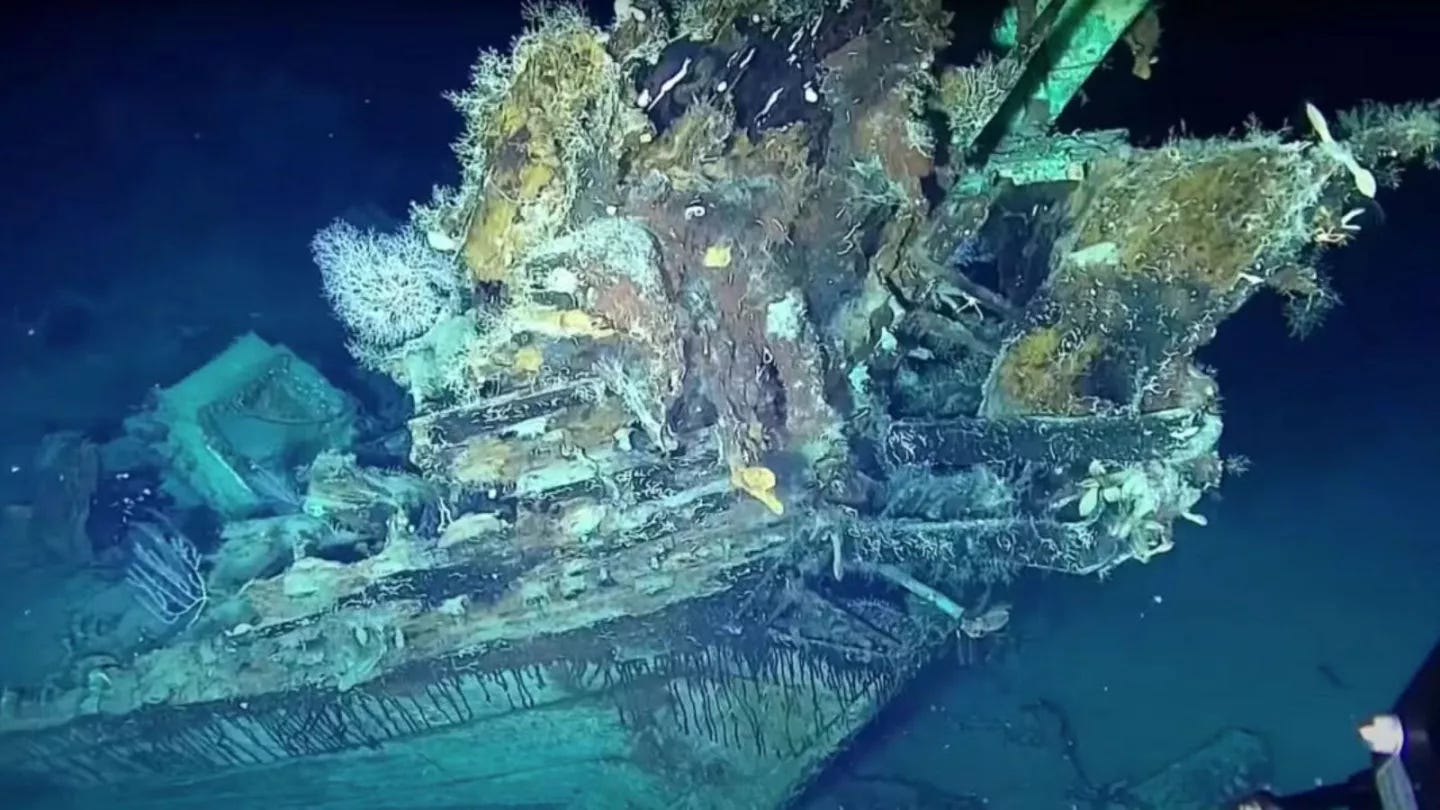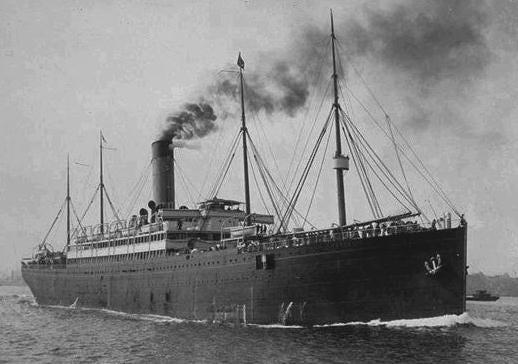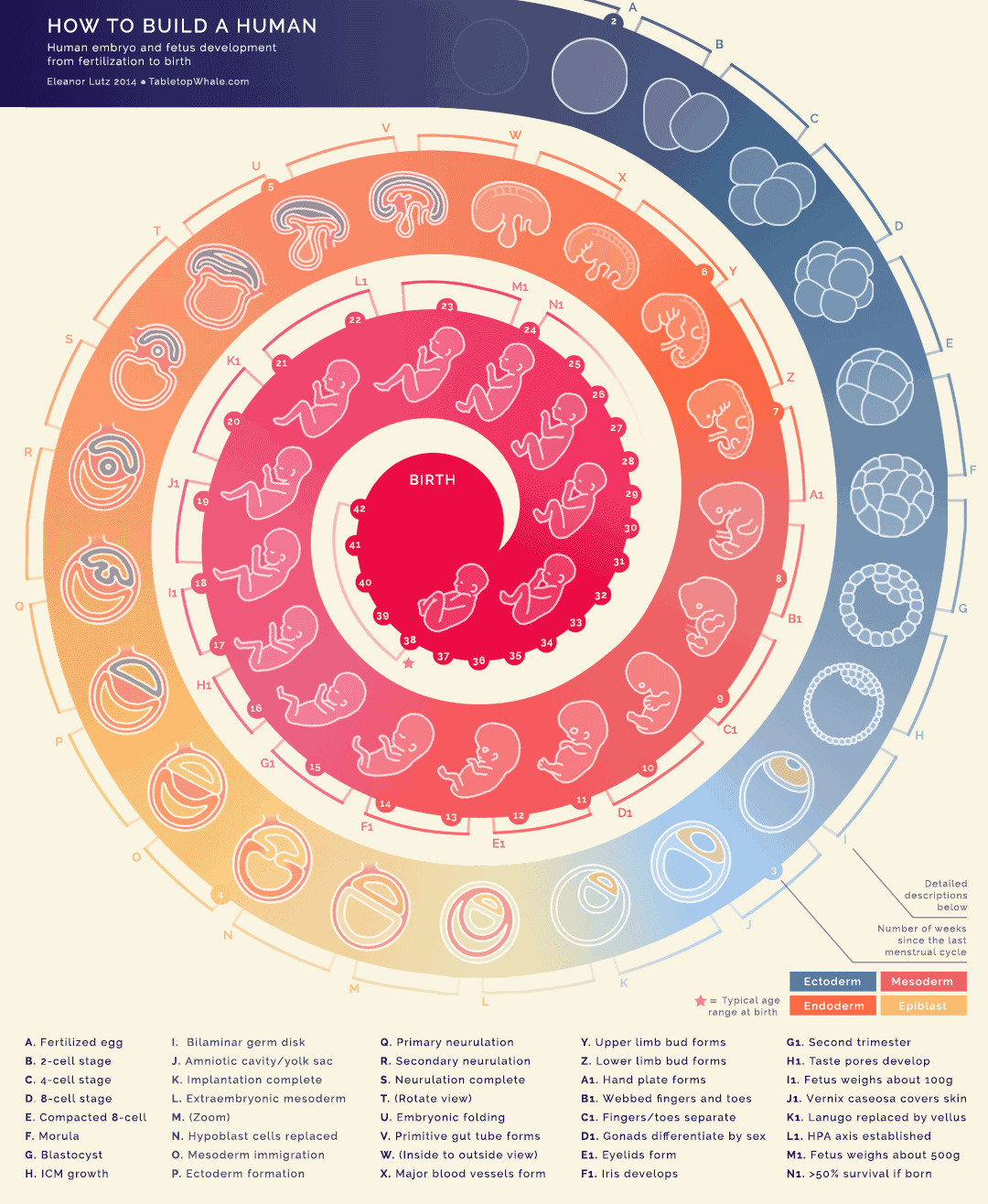The Weird Science Drop #9 🚢 Sunken ships bring in the chips 💰
👴 Exact age your body gives up 👷♀️ Working from home - the results are in 🤿 Diving for treasure 👶 Plus, how to build a human
“Καλημέρα!* Welcome to issue #9 of The Weird Science Drop. Once people have an idea in their head, it’s often difficult to shake off - even when evidence to the contrary is staring them in the face. Scientists are not immune to this, even though they’re really supposed to be. The scientific method tells you not to be wedded to any pet theory as one experiment could bring that belief crashing down. This goes the same for business leaders, who usually put their success down to a sixth sense and being ‘right’ rather, more often than not, a huge slice of luck. So when the likes of Elon Musk tell workers to head back to the office, is he backed up by the science? Find out below, but before you do, hit that subscribe button!
Daniel
* Good morning in Greek
Weird Science News ✍
🔬 A team of physicists has created the world’s smallest violin. Who says science doesn’t have a sense of humour, eh? The sketch of the microscopic string instrument is just 13 microns wide - less than a tenth of the width of the average human hair.
So did they just do it for giggles? Well, actually, it’s an example of harnessing the power of nanolithography, the ability to create patterns and structures at the Ant-Man level. This new field promises to help develop technologies in computing and energy production. Read more on Daily Galaxy
👴 As the man who killed Captain Kirk once mused, “time is the fire in which we burn”. We all get older as we march to the inevitable but that long stroll isn’t at one pace. Research has now pinpointed the two times in life when ageing hits the accelerator. Certain years when your youthfulness vanishes and all that’s left looking back at you in the mirror is an empty shell of a…
Anyway, by keeping track of biological samples from a group of 108 adults the researchers have managed to identify the two ages when things really go south quickly - 44 and 60. Essentially, when you hit 44 your body starts to struggle with caffeine and alcohol consumption, while at 60 your skin and muscles wave the white flag. Read more on Science Alert
👩🏭 Working from home. If the Covid pandemic has left one permanent mark on the world, it’s probably office staff hanging up the daily commute in favour of a short walk to the spare room. Some business leaders - particularly tech bros - still view it with suspicion, claiming people not in the office are work-shy. But the cat’s out of the bag and there’s no way of getting it back in.
Scientists studying remote working for four years have now reached one clear conclusion: working from home makes us happier. Those hours spent commuting are now put to better use, be that sleep, family, leisure or even cooking. All this has boosted mental health, while productivity actually goes up. Read more on CMU
💾 Do you have an old computer in the loft, gathering dust? Well, the US air traffic control has plenty, but their ugly beige boxes are still plugged in. Just like those 90s’ bands still touring to pay their gas bills, the Federal Aviation Administration (FAA) just can’t quit the past. At a recent government committee, the FAA admitted to still using Windows 95 and floppy disks to keep planes in the air.
For the younger readers, floppy disks are like SD cards but rubbish, while Windows 95 is what your grandad used to chat with other nerds about The X-Files on the ‘World Wide Web’. Plans are afoot to finally press ‘software update’ but I’m guessing they’ve been frozen in time due to the fear of the Millennium Bug (sigh, click here if you’re too youthful to know about it). Read more on Ars Technica
📻 Strange radio signals from space have been detected by a cosmic particle detector in Antarctica. So strange, they threaten to upend our current understanding of particle physics. The weird intergalactic pulses were picked up by instruments flown on balloons high above the frozen south from below rather than above, meaning they had made it through thousands of miles of rock before reaching the detector.
This has left physicists scratching their heads as the signals should have been absorbed by the Earth, meaning they could be dealing with a totally new type of particle no one knew about. Read more on phys.org
Treasure, treasure everywhere, so let’s all dive right down there 🚢🌊💰
Science, history, discovery, money… there are many reasons to grab a wetsuit and start searching for sunken treasure.
There’s an almighty bun fight on after a salvage team found the wreck of the Spanish galleon San Jose at the bottom of the Caribbean Sea off the Colombian coast.
It’s been known as the ‘richest vessel ever lost at sea’ ever since it was sunk by the Royal Navy loaded with around 200 tonnes of gold, diamonds and emeralds during the War of Spanish Succession in 1708.
In today’s money, the treasure trove could be worth around $17 billion - so you can understand the interest. Colombia, Spain, a US salvage firm, and the relatives of the slaves who were forced to mine it have all staked a claim.
So while they sort it out, here are a few other sunken gems archaeologists would love to find…
Flor de la Mar
This large 16th-Century Portuguese ship had already seen better days by the time it sank in a storm off the coast of Sumatra carrying more than $2 billion in goodies destined for the king. Portugal was very much into conquest at the time, and the treasures had been plundered from what became Malaysia.
The Royal Merchant
This English galleon was transporting Spanish gold and emeralds to Belgium to pay 30,000 troops when it sprang a leak around 30 miles off the Cornish coast. Missing since 1641, the Royal’s anchor was recovered by fishermen a few years ago but so far there has been no sign of the treasures it was carrying.
RMS Republic
The White Star Line didn’t have much luck at the start of the 20th Century. Just a few years before Titanic met an iceberg, the steam-powered RMS Republic went down after hitting another ship in heavy fog off the coast of Massachusetts.
Unlike the Titanic, most of the passengers - many of them very wealthy Americans - were saved but treasure worth some $1 billion still remains unaccounted for.
Santa Maria
One of Christopher Columbus’s fleet of three ships that discovered the New World at the end of the 15th Century, the Santa Maria ran aground just off modern-day Haiti after the sailor in charge of steering the boat thought he’d catch a quick nap.
It might not promise gold, but if found the ship’s historical significance would be worth more than a pretty penny.
1715 Treasure Fleet
Eleven ships loaded with treasure all perished off the coast of Florida after being hit by a hurricane. Gold and silver continue to be found by divers even to this day, but much of it still lies at the bottom of the ocean ripe for the plundering. Arrr!
Cinco Chagas
Another 16th-Century Portuguese vessel destined for the bottom of the sea, the Cinco Chagas was sunk during the Battle of Faial Island in the Anglo-Spanish War in 1594.
The ship went down near the Azores carrying 2,000 tons of treasure, including 22 chests filled to the brim with diamonds, rubies and pearls.
Right, where are my snorkel and flippers?
Babies come back 👶 How long would the human race last if we all stopped having children?
Birth rates are a growing concern in developed countries. We’re just not having enough kids, especially when you consider the ageing populations in those nations. Who the hell is going to look after them?
If everyone stopped having babies right now, the human race would be all but gone within a century. But what would happen in the meantime is rather interesting, according to The Conversation.
First off, the population would start to shrink as older people died off with no replacements coming in. This would occur rather slowly, though, and things won’t really go down the pan until a few years later when suddenly there are no young people coming through to do vital things like grow food and provide health care.
This would be the spark for civilisation as we know it to crumble, as food, clean water and prescription drugs become scarcer. So that 100 years we were guessing at the start would be more like 70 as average lifespans start to plummet.
Of course, people everywhere stopping having kids is very unlikely, no matter how lazy we get, but there are other ways this might occur, such as a pandemic rendering all people of reproductive age infertile, or a nuclear war (not good for the libido).
Overall, the human population worldwide is still growing and is expected to hit ten billion people by the 2080s. That’s a lot of people. But this can change relatively quickly. For example, the Neanderthals flourished for hundreds of thousands of years before going extinct in the face of the reproductive power of Homo sapiens.
At the moment, the declining birth rates in developing countries are mainly down to people choosing not to have children, along with a healthy helping of infertility, particularly in men. The latter might hint at the start of a Children of Men scenario, which foresees wars, depression and totalitarian police states. Errr, hang on…
Photo of the Week 📷
This amazing photo of the Himalayas was captured by an astronaut from the International Space Station. You can see the peaks of Kanchenjunga (left) and Everest (right).
For your ear holes 🎧
Josh and Chuck chase away the darkness and explain electricity.
Infographic Magic 📊
Cool Quote 🗣
“The brain weighs only three pounds, yet it is the most complex object in the solar system”
Michio Kaku
Weird Science Factoid 🤯
There are way more trees on Earth than stars in our galaxy, the Milky Way. At the latest count, there are three trillion trees sharing the planet (even if 15 billion are chopped down every year) compared with just a mere 400 billion shining balls of gas in the galaxy.
Weird Science Fries on the Side 🍟 (aka the best of the rest)
Discovery of a gold-eating fungus revolutionises the search for metals and minerals
Lost ancient world preserved under ice discovered in Antarctica
NASA's Voyager Spacecraft Found A 30,000-50,000 Kelvin "Wall" At The Edge Of Our Solar System
Asteroid speck at the Field Museum could hold the key to life
Early Signs of Cancer Found in Patient Blood 3 Years Before Diagnosis
Did you miss? More from The Weird Science Drop 👀
Put through the grinder
Brain broken
Brain broken
The most-visited links from the last newsletter 👇
Humans Give Off a Light That Is Extinguished in Death, Study Reveals
Putin facing new 'invasion' as 1m-strong antelope swarm destroys Russia's crops
About The Weird Science Drop 🚀
Science is weird, and here’s the proof. The Weird Science Drop goes where other, more-sensible newsletters fear to tread. Every week, we grab our trusty white lab coat, bunch of bubbling test tubes and world-ending robot prototype to go in search for the overlooked, under-the-radar and, above all else, most madcap science news, views and research.
About me 👴
Daniel Smith is an old experienced journalist who has worked for a host of news publishers on both sides of the Atlantic. A long, long time ago, he fancied himself as an astrophysicist but instead turned out to be the worst scientist since the man who mapped out all those canals on Mars that turned out to be scratches on his telescope's lens. Luckily, he is now not working on the Large Hadron Collider inadvertently creating a black hole that would swallow the world by pressing the big red button but is safely behind a desk writing this newsletter, bringing you the fantastical underbelly of nature... The Weird Science Drop.
Have I missed anything? 🚨
Feel free to throw me an email or just fill out this super simple form. I'll read each and every one. Promise.







